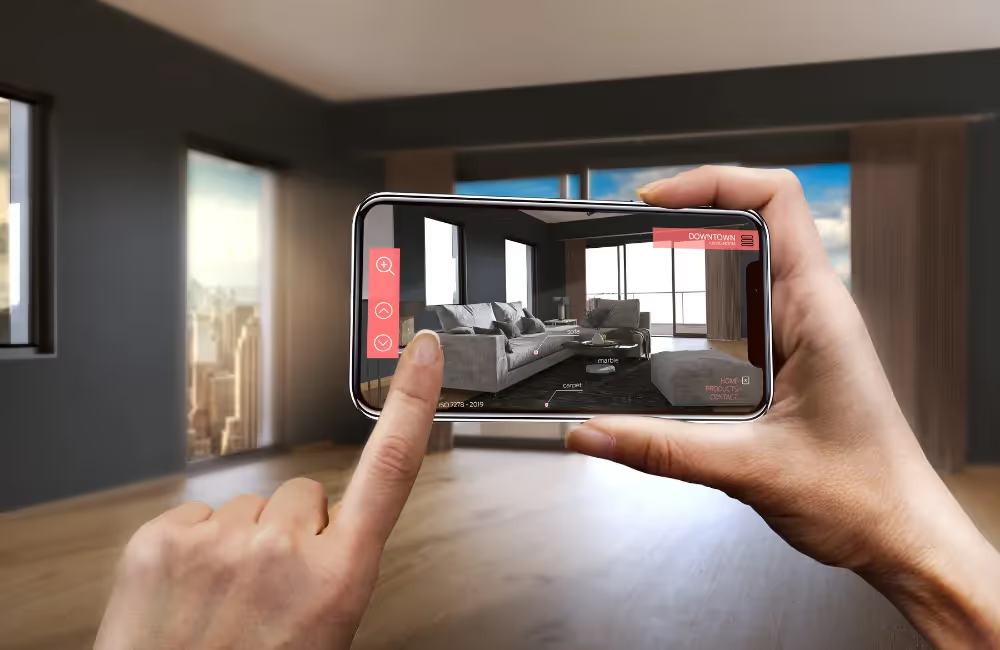
The digital world is ever-changing, which is why it’s so important to stay ahead of the curve and stand out against the competition. One of the ways to do that is through creative virtual reality (VR) and augmented reality (AR) marketing campaigns.
Virtual reality (VR) is a technology that immerses users in computer-generated environments, allowing them to interact with and experience these virtual worlds as if they were real. On the other hand, augmented reality (AR) overlays computer-generated content or virtual objects onto the real-world environment, typically viewed through a smartphone, tablet, or specialised AR glasses. While VR and AR originally started in the gaming and entertainment industries, they have quickly revolutionised marketing campaigns.
This article explores how AR and VR have been integrated into digital marketing strategies, their benefits, and how you can create a successful marketing campaign using the two technologies.
How Is Augmented Reality Incorporated Into Marketing Campaigns?

In marketing, augmented reality (AR) creates interactive and immersive user experiences. Brands use AR apps and tools to engage customers in original ways.
An example of augmented reality being used in marketing is the IKEA Place app, which allows customers to see what products or furniture will look like in their homes before they make a purchase.
Another example is Sephora’s Virtual Artist. Many people don’t buy makeup products online because they don’t know what they’ll look like on their skin. Sephora’s app has revolutionised the way customers shop for makeup online. It allows them to virtually try on a range of products, such as eyeshadow, lipstick, fake eyelashes and more, before making a purchase.
These two apps are fantastic examples of how AR can enhance the shopping experience and reduce the uncertainty of buying products online.
Why Include Virtual Reality In Marketing Strategies?

These are some of the reasons businesses include virtual reality in their marketing strategies.
Creates a more personalised experience
By developing a virtual environment, as Gucci did with Gucci Town in Roblox, Gucci allows customers to interact with products and even purchase items for their Roblox characters, creating a more personalised experience.
Nike also partnered with Roblox to create Nikeland, a virtual world of Nike buildings, fields and areas where players can compete in different games. The virtual space also includes a showroom where players can buy Nike’s latest products for their avatars.
Immersive experiences
VR creates immersive experiences that are more engaging and memorable than traditional media. This immersive aspect can significantly increase a campaign's emotional impact, making it more likely for customers to remember and share their experiences with others.
Unique storytelling
Virtual reality offers an unparalleled opportunity for storytelling. It allows businesses to transport customers into different worlds or scenarios that highlight the value and features of products or services in a highly interactive and engaging way.
Competitive edge
Incorporating virtual reality into marketing strategies can differentiate a brand from its competitors. By leveraging the latest VR technology, companies can position themselves as forward-thinking and innovative, attracting tech-savvy consumers and enhancing brand perception.
Increased engagement and conversions
The engaging nature of VR experiences can lead to higher engagement rates, as users are more likely to spend time with the content and share their experiences with others. This increased engagement rate can lead to higher conversion rates as consumers are more immersed in the brand's offerings.
The Benefits Of Using Augmented Reality in Marketing Campaigns

Augmented reality offers a range of innovative benefits for marketing campaigns, transforming how brands engage with their audiences. Some of the benefits include:
Increases customer engagement
By creating unique and immersive experiences, you’re allowing your audience to engage with your brand, product, or service more personally.
Improves brand awareness
By introducing new and exciting AR experiences as part of marketing campaigns, you capture the attention of your current audience and attract others who are intrigued by the AR experience you offer.
Speeds up the buying process
If a customer or potential customer isn’t sure about how a product will look, they can use AR tools, such as those created by IKEA or Ray-Ban, to help make the decision. By seeing how furniture will look in their home or how sunglasses will look on their face, customers can make a faster and more informed decision before purchasing.
Makes your brand more accessible
There are 6.84 billion smartphone users worldwide, with the number expected to increase by 5% every year. With so many smartphone users worldwide, using AR in marketing campaigns is a no-brainer. With more than half of the world’s population using a smartphone, incorporating AR into your marketing efforts allows your brand to truly become global, meaning customers can access your content and products from every corner of the world.
Helps brands go viral
In the modern age, going viral is one of the best ways to attract new customers and boost conversion rates. A study conducted by Camera IQ showed that 78% of participants said they were likely to share a brand’s AR experience with their community.
Effective Marketing Campaigns With Anchor

With the number of smartphone users growing exponentially worldwide, there is no better time than now to start incorporating AR and VR into your marketing campaigns.
If you’re not sure how to create effective marketing campaigns? Look no further than Anchor Digital. Our team of marketing professionals has the know-how and experience to craft unique and engaging marketing campaigns that will not only attract customers but also convert.
Want to learn more about how we can help your business succeed with effective marketing campaigns? Drop us a line today.



























